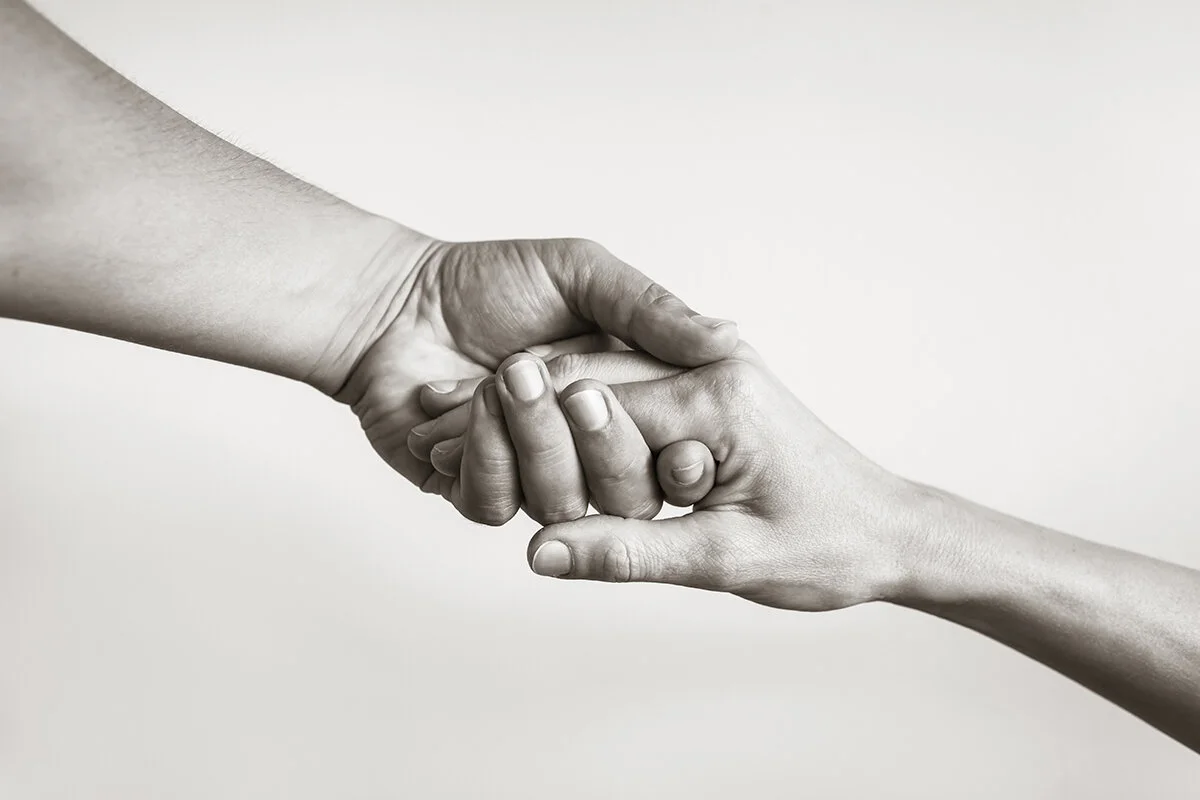Who is sitting pretty in the C-suite? Who has the greatest social influence? Who has the newest toy before anyone else? This drive to achieve and accumulate comes from a place of wanting to create safety for ourselves. It also comes with a terrible cost. The more we succeed at setting ourselves apart, the lonelier it becomes.
Along with our competitive urge, we are also wired to take care of each other, especially those who are most like us. Our task as compassionate leaders is to continually expand the circle of community to include everyone and everything. Recognizing our interconnectedness will help us lead in ways that create environments of safety, connection, and belonging and allow us to thrive individually as well as in communities and organizations.
Our interconnectedness laid bare
As our world has “shrunk” we have been impacting each other in ways that show how directly connected we are. Today, the COVID-19 pandemic is a result of just how quickly an action in one location can quickly zip around the entire world. The rapid pace of climate change is putting the earth on the brink of another mass extinction event. We are so intricately connected that our human race may either survive together or be eliminated together.
The golden age of scientific discoveries around our interconnection is in full swing. Much like the 16th century discoveries about heliocentrism and gravity, scientists today are making discoveries that show how connected we are to each other. These findings are expanding our understanding of our human nature and consciousness. Quantum entanglement, or Einstein’s “spooky action at a distance,” is now known to be possible. Some interaction between particles separated by thousands of miles cannot be explained by local factors. They are connected across broad distances of space.
We are also connected across broad distances of time. Our genetic expression – how our genes give rise to observable traits – is impacted by the experiences of multiple generations of our ancestors. It is increasingly well-documented that the environmental impacts we experience and the lifestyle choices we make today will have an impact on generations to come.
We are truly connected across space and time in ways that are quite remarkable.
The inner work of interconnectedness
Understanding that the creation of a largely separate self is an illusion allows us to stop wasting energy on two activities. First, we can let go of the endless chase for the unattainable pot of gold at the end of the rainbow. Next, we can choose to step away from the blame and shame that often accompany our own suffering.
We don’t have to turn away from suffering – from our own suffering or from the suffering of others. In each moment we have a choice of how to respond and what action to take. Recognizing that both our successes and failures are driven by many, many factors beyond our control, and quite likely by factors science is not yet even able to describe, helps us to reorient our attention to what is ours to do in the present moment. We don’t use energy worrying about blame or credit. We focus on what needs to be done now and how we can contribute to getting it done.
Recognizing our common humanity is one of the three core elements in Kristin Neff’s model for building self-compassion (along with mindfulness and self-kindness). The simple fact is that everyone suffers, and acknowledging that fact can help us feel less isolated in our own suffering, engage in self-compassionate acts, and lead in the world from a position of greater sense of grounding and strength.
The outer work of interconnectedness
When compassionate leaders meet their own suffering with self-compassion, it becomes easier to let go of the urge to be superhuman. Begin by allowing yourself to be seen in your full, flawed humanity to your team. Doing so has important, valuable impacts. Research shows that your vulnerability creates connection through your authenticity. While leaders fear that being vulnerable makes them appear weak, in fact, it helps them become more effective.
Showing your own experience of suffering also sends a powerful message to others that it is okay to openly acknowledge their own difficulties. We want to end the epidemic of silent suffering. Allowing your team to bring their challenges into the light of day allows for the first step toward compassionate action – awareness – which is necessary to move toward compassionate action.
In closing…
Let’s get rid of the destructive belief that we should be ashamed of suffering. The sooner we do, the sooner we can address our individual needs and our mutual needs. In reality, the distinction between our individual and our mutual needs is much smaller than we think. Let’s move beyond the desire to set ourselves apart and find ways to simply address our common human needs.

